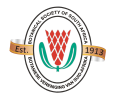Written by Zoë Chapman Poulsen. Photos by Graham Grieve or supplied by Sinegugu Zukulu.
To celebrate African Traditional Medicine Day on 31 August, Zoë Chapman Poulsen interviewed pioneering Pondoland conservationist and champion of medicinal plant Sinegugu Zukulu.
“For me, the future is about protecting Pondoland’s biodiversity, so we are able to sustain it for future generations to see the treasure that we have,” says Sinegugu Zukulu, Pondoland trailblazer in community-focused conservation, ecotourism, upskilling youth and raising awareness of Pondoland’s unique and extraordinary biodiversity and ecosystems.

Above: Sinegugu Zuluku. Photo supplied by Sinegugu Zulu.
Sinegugu (51) has devoted his life to protecting Pondoland’s rich, diverse and spectacular landscapes. This fascinating area stretches from Hibberdene in Kwa-Zulu Natal, south along the coastline to Port St Johns in the Eastern Cape.
The Pondoland centre of endemism forms part of the Maputaland-Pondoland-Albany biodiversity hotspot and has about 200 unique endemic species. Botanists believe more new species will still be discovered in its isolated habitats and river gorges.
“Protecting the land is protecting livelihoods,” believes Sinegugu. “It is protecting the lives of the people.”


Top: Tribute of the Gwe Gwe River. Above: Berkheya speciosa subsp. speciosa. Photos: Graham Grieve.
The key to successful conservation, he believes, is highlighting how people depend on better functioning ecosystems for water, medicinal plants, livestock grazing, thatch and ecotourism.
As a pioneer in supporting ecotourism development along the Wild Coast, Sinegugu began leading walks into the grasslands, sharing his extensive knowledge of Pondoland’s medicinal plants. This grew into the 2012 book, Medicinal and Charm Plants of Pondoland. The book showcases the traditional knowledge of many herbalists from the community of Amadiba and surrounds where Sinegugu has spent most of his life.
“For me, it was vital to show how important indigenous knowledge is for us,” says Sinegugu. “I wanted to put the faces of our herbalists there for the world to see – and also to recognise their indigenous knowledge.”

Above: Bongeka’s Patch and herbalist. Photo: Graham Grieve.
Knowledge of medicinal plants is very common among the communities of Pondoland, often starting with young children, who learn while accompanying local herbalists collecting medicines in the veld.
“We are losing that knowledge now,” Sinegugu says. “Kids today are no longer exposed to plants and the environment as we were”.
“Young people today can no longer learn as much as we did because they are leading such a different life from when we were young. There were no television sets then, no cellphones. Young people today are preoccupied with cellphones.”


Top: Boophone disticha. Above: Eriosemopsis subanisophylla. Photos: Graham Grieve.
A holistic approach to healthcare is at the core of the traditional use of medicinal plants. As well as treating illness or injury, plants can be used as charm plants.
“Charm plants may be used for steam baths to make skin more attractive or even by people who want to be lucky with something – perhaps they are going job seeking.”
The biodiversity of Pondoland, including its medicinal plants, faces a number of different threats. Population pressure is a widespread threat and croplands from farming can often expand into virgin veld. Too frequent veld fires used to burn old dry grass in the sourveld for better grazing is another challenge. Pondoland has also not escaped widespread alien plant invasion.
Some medicinal plants are in such demand that they have fallen victim to overcollection in some areas. This is one reason why Sinegugu Zukulu has been discussing with the South African National Biodiversity Institute (SANBI) the idea of establishing a botanical garden dedicated to the cultivation, use and conservation of Pondoland’s endemic plants.

Above: Gwe Gwe Bay. Photo: Graham Greave.
The proposed new botanical garden aims to save and protect these endemic species, as well as showcasing them to visitors so they can be seen all in one place. Part of the project would comprise a nursery to grow and process medicinal plants. This would create jobs for local people by supplying the local market.
Sinegugu has always had the people of Pondoland front and centre of his extensive and highly varied work. Innovative community-driven conservation remains key to his success.
“If conservationists understand the importance of biodiversity to people’s lives and livelihoods, their task would become much easier,” he says. “If you take this approach, people would not need a lot of convincing for them to conserve biodiversity.”
Sinegugu would love to see Pondoland getting some recognition and conservation status, such as a biosphere reserve or a world heritage site.
“But,” he cautions, “we have to make sure that the rights of the people are also protected so they still have access to the land.”
Further reading
Medicinal and Charm Plants of Pondoland by Sinegugu Zukulu, Tony Dold, Tony Abbott and Domitilla Raimondo (SANBI, Pretoria).
Get in touch
Sinegugu Zukulu regularly leads guided hikes along the spectacular Wild Coast. For more information email: zukulusinegugu@gmail.com or phone: +27 72 428 5109.



























































